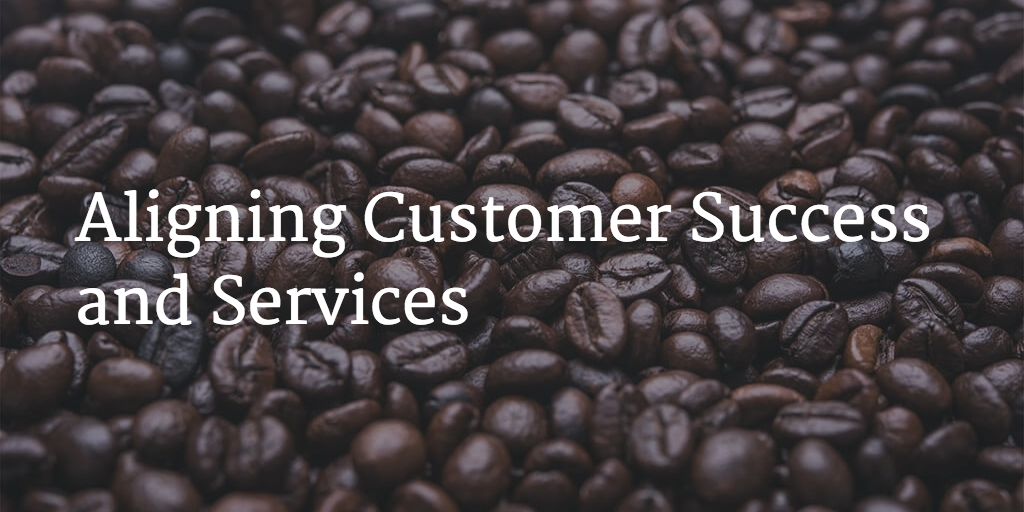As companies mature, organizations that were at one time encompassed in one person, become separate and distinct. Early on at many software companies, one person might be responsible for training, implementation, Customer Support, Professional Services, and Customer Success and perhaps even renewals and upsell. Over time, each of those will likely become a separate organization. And, along the way, it will make sense to start charging customers for some types of value-added services, too. If you end up with both a Customer Success and Professional Services organization, it will be important to define and differentiate them.
There are no hard and fast rules here, but, in most cases, Customer Success will not be separately charged-for but will be embedded in the contract cost while your Professional Services team will aspire to become a profit center. Interestingly, many of the skills in these two groups are overlapping and you may even find that the people are semi-interchangeable, too. But ultimately, the organizations will grow up to look very different and be measured in totally different ways.
It’s a unique challenge to align two organizations that are filled with people who share many of the same skills and are working with the same set of customers, one for pay and one for free. This situation can often be very confusing both internally and externally. Proceed at your own risk but know that it’s been done many times before and there are ways to make it work that will make sense both internally and externally.
The key to alignment here is measurement. Simply put, a Professional Services organization could theoretically be successful just billing full-time to one customer because they are measured on revenue and profitability, not how many customers they touch. Customer Success, however, would fail miserably by making only one customer wildly successful, regardless of how valuable they might be. Clearly, in order to meet their retention and upsell goals, they must spread their wealth across many customers.
This clearly means that Customer Success’ interventions with customers need to be much shorter and more focused. Their goal is usually not to get customers to the holy grail, at least not in one sitting. The goal is usually to get them over some real or perceived hump with regard to the value they are deriving from your product. Professional Services, on the other hand, will work painstakingly through a defined project until it is complete. That’s what they get paid to do.
The real key to overall success for both organizations and for the company, is to involve both groups with as many customers as possible. Although Professional Services might look successful on paper simply by billing a lot to one customer, the reality is that everyone wins if they are engaged with as many customers as possible. Regardless of how competent your Customer Success team might be, there’s no substitute for customers who are willing to pay you (Professional Services) to become better customers.
The great news is that if Customer Success fulfills its trusted advisor role, they will have the credibility to successfully suggest to their customers when Professional Services should get involved. The key is not so much the skills involved but the focus. Customer Success may well be able to deliver pretty much the same capabilities to the customer, but Professional Services is able to be dedicated for an extended period of time with a given customer.
You will find customers who refuse to pay for Services and will milk Customer Success for everything they can. And that’s OK. Live with it. The downside for those customers is that it may well take several weeks or even months to get from Customer Success, what they could get in a few days from your Consulting team. It will be the urgency of the results desired that often motivates the customer to get out their checkbook. Your Customer Success team can earn the credibility with your customers to be taken seriously when they suggest such a course of action.
Similarly, Professional Services will sometimes work off of a custom Statement of Work, but they will also sell and deliver pre-packaged services such as Performance Tuning or a Customer Restart (for when your champion has left). The clear definition of these packages and the association of them with the appropriate organization will help to differentiate them both internally and externally.
It seems counterintuitive but it turns out that the two organizations with the most overlapping skills are perhaps the easiest to differentiate and align. And that’s for one very simple reason – they need each other. Customer Success needs Professional Services to deliver high-quality consulting to their customers which will raise customer sat, improve ROI, and take some burden off the Customer Success team.
At the same time, Professional Services needs a team of people who are talking to customers every day, understanding their challenges, and trying to determine the best way to improve the use of your product, in order to pinpoint the opportunities for selling additional services. Voila! The Customer Success team does that exact job all day, every day. It’s truly a marriage made in heaven.

